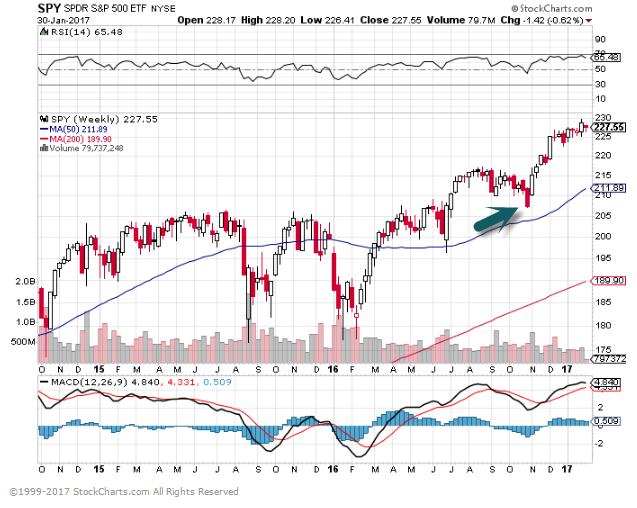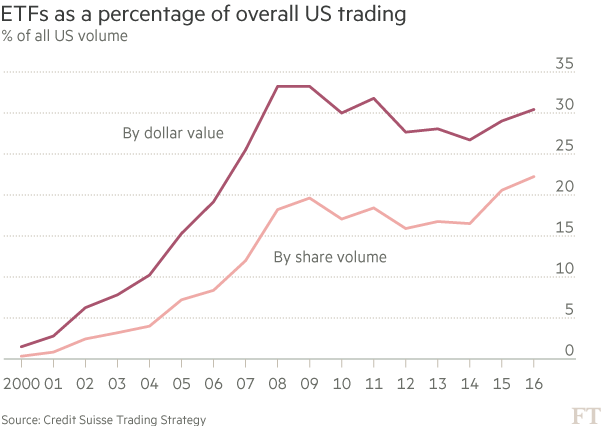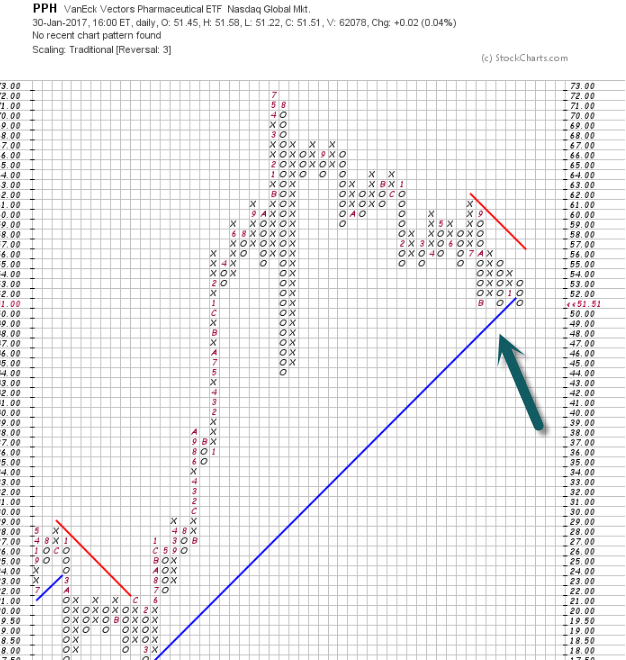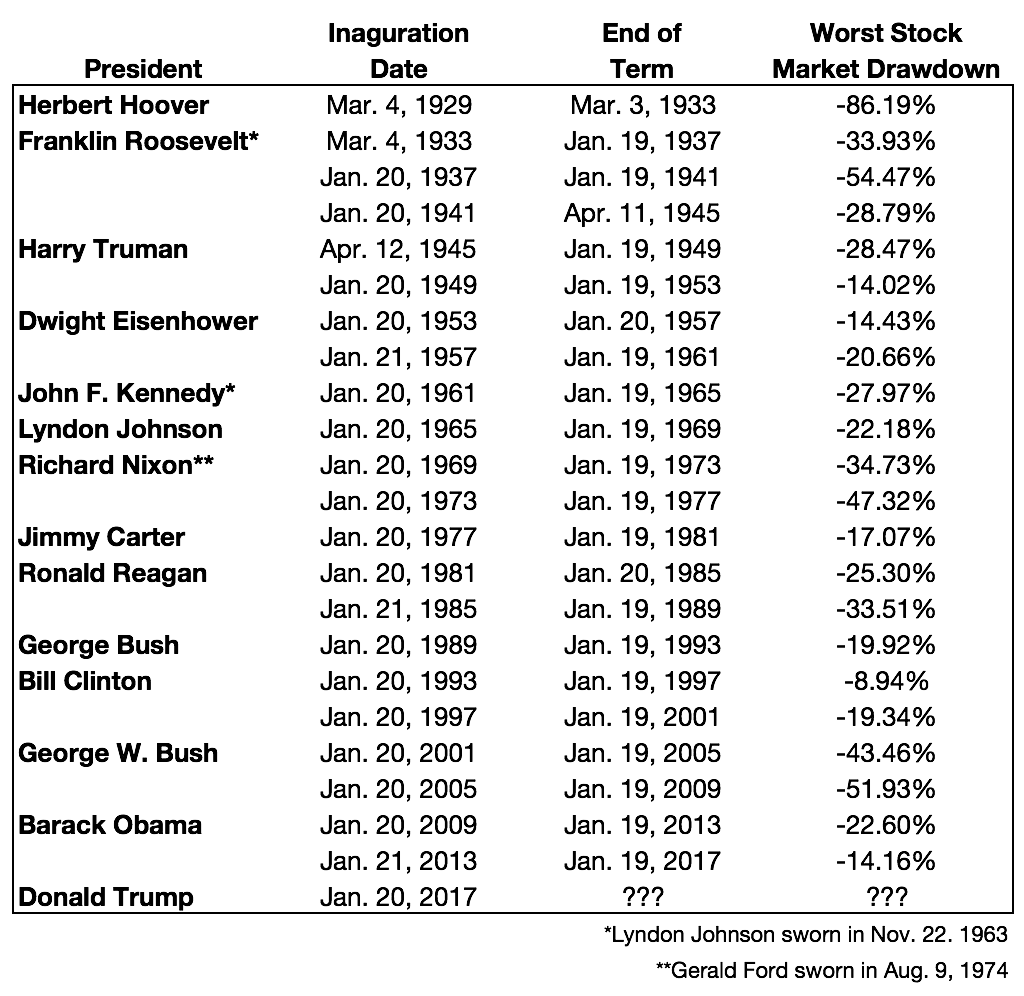1.Longest Streak in 11 Years without a 1% Pullback
Days without a 1% pullback
There have been 75 sessions (including Monday) without a 1% drop in the S&P, which marks the longest such streak in about 11 years, according to Krinsky. A period of sideways trading tends to suggest that the market has pent up momentum. And if history is any gauge, momentum may be leaning toward a downturn, given the market’s tendencies in February.
http://www.marketwatch.com/story/a-big-stock-market-selloff-in-february-looks-increasingly-likely-2017-01-30

2.ETFs 30% of All Dollar Value Trading.

3.ETF Growth and Tax Efficiency

How ETFs Avoid Realizing Capital Gains
One unique feature of ETFs relative to mutual funds is that shareholders do not transact directly with a fund, but rather with an independent third party called an “authorized participant” or AP. It’s useful to think of the AP as a stock broker who acts as the middleman between the shareholders of the ETF and the fund itself. In the case of a purchase order, the AP interacts with the shareholders by exchanging ETF shares for cash. But, the AP being just a middleman doesn’t usually have many shares in inventory and must obtain them from the fund. To do so, the AP uses the cash from the investor to buy a predetermined basket of stocks – called a “creation basket” – corresponding to the holdings of the ETF, and then exchanges with the fund the creation basket for newly created shares of the ETF, called a “creation unit.” Finally, the AP delivers those shares to the investor. The process is called the “in-kind creation” process.
Fig. 1: “In-kind creation” process

Fig. 2 “In-kind redemption” process

http://www.valuewalk.com/2017/01/morningstar-promotes-etfs-big-leagues/
4.Interesting Technical Action in Big Pharma….Will Trump Go After Big Pharma Pricing?
PPH-Pharma ETF…50day thru 200day to Downside on Longer-Term Weekly Chart.

Chart is sitting right on blue uptrend line going back to the end of 2009

www.stockcharts.com
5.February Seasonality During Election Year.
Thanks to my man Dave Lutz at Jones for information
BEWARE FEBRUARY? – With markets resting right on All-Time Highs – I am going to post this reminder today and on Weds… “February Worst Month of Post-Election Years” says AlmanacTrader – Since 1950, January S&P 500 gains of 2% or more corrected or consolidated in February 62.1% of the time. In the 20 years that the S&P 500 gained 4% or more in January, 65.0% of the time the S&P declined or finished flat (less than 1% gain) in February.

February’s post-election year performance since 1950 is miserable, ranking dead last for S&P 500, NASDAQ, Russell 1000 and Russell 2000. Average losses have been sizable: -1.8%, -3.9%, -1.9%, and -2.0% respectively.

6.Fear and Greed Index Moved Back to Neutral

Barrons Insider Transaction Super Bearish Highs.

7.Who’s President Doesn’t Matter That Much to the Stock Market
By
Ben Carlson
Plenty of ink has been spilled by pundits, economists, portfolio managers, strategists and the financial media about what President Donald Trump’s economic plans, cabinet selections, trade talk, fiscal policy and other ideas will mean for the markets. Some see the Trump rally since early November as a sign that investors believe his policies will be market-friendly for the next four years. Others see the surge — part of the eight-year long bull market — as little more than a sugar high and predict Trump is likely to crash the markets through policy mistakes or a poorly worded tweet.
Yet it would be pure speculation at this point to forecast whether Trump will cause a boom or a bust in the stock market. Either is always a possibility, but in the stock market, risk is typically much easier to predict than returns. Returns are promised to no one, but risk is ever-present.
And risk does not discriminate based on who the president happens to be. I took a look back at every president since Herbert Hoover to see how bad stock market losses have been for each four-year term in office. The following table shows the worst drawdown on the S&P 500 for each term going back to the late 1920s:
 https://www.bloomberg.com/view/articles/2017-01-25/who-s-president-doesn-t-matter-that-much-to-the-stock-market?curator=thereformedbroker&utm_source=thereformedbroker
https://www.bloomberg.com/view/articles/2017-01-25/who-s-president-doesn-t-matter-that-much-to-the-stock-market?curator=thereformedbroker&utm_source=thereformedbroker
8.Wearable Fitness Trend Crashes..Fitbit Falls 88% from Highs.
 9.Read of the Day…Jeremy Grantham on How Trump got Elected.
9.Read of the Day…Jeremy Grantham on How Trump got Elected.
Jeremy Grantham: Why Donald Trump Won
American workers elected a billionaire to save them from the rich and powerful, writes the money manager.
By
JEREMY GRANTHAM
Jan. 26, 2017 5:10 a.m. ET
An extraordinary, large exit poll run by Reuters/Ipsos in which 45,000 people participated took place in the early evening on election day in the U.S. To say this was a detailed poll is an understatement. The spreadsheet for each question in small print runs the length of a generous dining room table, 11 feet!
It will tell you how the American Hindu sample of 172 voted. The poll’s early results of 9,000 inputs also revealed on the night before the election, when the bookies’ odds against Trump were 5 to 1, that the odds were wrong.
The critical statement polled, in my opinion, was this: “America needs a strong leader to take the country back from the rich and powerful.” From my perspective, the pushback against the rich and powerful for several decades has been very unexpectedly wimpy. “Occupy Wall Street” aside, the average voter had sat still for a series of major tax cuts for the higher tax brackets and on capital – capital gains and dividends.
The lower income workers had paid the cost of outsourcing and labor-saving technology but had received no material help, while corporations and corporate officers and owners were the beneficiaries. In fact, money spent on worker training and education declined relative to foreign competitors. This shows up clearly in declining educational standards where today the U.S. global rank is, to be friendly, mediocre.
Most scarily in this regard, the average Chinese 20-year-old now ranks two full years ahead of his American counterpart in math proficiency! So, all in all, we can say that global forces pushed wages down and politics pushed them deliberately lower.
The share of GDP going to labor hit historical lows as recently as 2014 and the share going to corporate profits hit a simultaneous high. Similarly, the share of all income going to the top 0.1% rose well beyond any previous record and approached 100% of all the recovery in total income since the lows of 2009!
The “rich and powerful” not only increased their share of income and capital at an unprecedented rate in recent decades, but they also increased their grip on politics through a rising tide of political spending, including lobbying and the new Super PACs, courtesy of the Supreme Court’s ruling in Citizens United.
Even before this ruling, Princeton University Professors Gilens and Page had reported on the complete lack of influence that voter opinion had on the probabilities of any bill passing through Congress. If favored by the public the average 31% chance of passing rose to a dizzying 32% If not favored, it fell to 30%, justifying the nickname given to the influence of the average citizen: “Gilens’ Flatline.”
When favored by the richest 10%, bills passed at a 65% rate – there is inertia after all.
But when opposed by the wealthier and supported by inertia, the passing rate was essentially nil. Those hoping that there is any life at all left in representative democracy have to hope that some critics of this work are right when they claim that the data is complicated to sort out and the conclusions may be overstated. Anecdotal evidence on such issues as the minimum wage and gun laws, though, suggests that majority opinion is, shall we say, easily offset.
Scarily, Gilens’ work does not include the post Citizens United data on political spending. I could not resist throwing in political contributions from unions, which are often cited by right-wingers as somehow balancing the books. And once upon a time they did. But, as unions have been severely weakened by the same combination of global forces and politics previously described.
Click for full read at Barrons.
http://www.barrons.com/articles/jeremy-grantham-why-donald-trump-won-1485425445
10.Self-Compassion, Growth Mindset, and the Benefits of Failure
Learning from your mistakes combined with self-compassion is a winning formula.
Posted Jan 30, 2017
Two different psychological studies were published today that illuminate the importance of various age students practicing self-compassion and adopting a “growth mindset” (a term coined by Carol Dweck of Stanford University) marked by a self-belief that your intelligence is malleable and never set in stone.
The first study, from the University of British Columbia, “Don’t be so hard on yourself! Changes in self-compassion during the first year of university are associated with changes in well-being,” was published today in the journal Personality and Individual Differences.
The second study, from Michigan State University, “Neural evidence for enhanced attention to mistakes among school-aged children with a growth mindset,” was published online today in Developmental Cognitive Neuroscience.
Self-Compassion May Be Key to Thriving During Freshman Year
Researchers at UBC recently found that students who reported higher levels of self-compassion also tended to feel more optimistic, energetic, and alive during their first semester of college. In fact, a student’s self-reported self-compassion levels rose in tandem with his or her overall motivation and engagement.
The researchers emphasize that self-compassion should incorporate self-acceptance, -forgiveness, and -kindness. Not only does this mean avoiding excessive self-criticism … self-compassion also includes recognizing that failure is an inherent part of the learning process in academics, sports, and just about every other pursuit in life.
As Ellen DeGeneres once said, “It’s failure that gives you the proper perspective on success. When you take risks, you learn that there will be times when you succeed and there will be times when you fail. Both are equally important.”
DeGeneres’ anecdotal words of wisdom corroborate the April 2016 research findings by Carol Dweck and psychological scientist Kyla Haimovitz of Stanford University.
In their study, “What Predicts Childrens Fixed and Growth Intelligence Mind-Sets? Not Their Parents Views of Intelligence but Their Parents Views of Failure,” Haimovitz and Dweck report that children who are encouraged to view failure as an opportunity for growth faired much better than children who had parents who reinforced the notion that failure is always ‘bad.’
People with a growth mindset believe that intelligence is malleable, expandable, and never fixed. They also believe that you can learn and grow from mistakes or setbacks.
Failure and success are two sides of the same coin, as summed up in the sage advice of Winston Churchill: “Success consists of going from failure to failure without losing enthusiasm.” (For the record, this has been my mantra for eons; as both a quixotic ultra-endurance athlete and fledgling writer who has endured countless amounts of failure and naysayers throughout my lifespan along with a few spatterings of success.)
Dweck’s previous research found that growth mindset also boosts resilience, positive emotions, and someone’s ability to bounce back quickly from the agony of defeat. With practice, a growth mindset helps you let go of failure’s disappointment and move on to new challenges.
On the flip side, those with a “fixed mindset”—who believe that their intelligence and abilities are less fluid—tend to beat themselves up and get stuck, by dwelling on failures. A fixed mindset is also linked to a lack of self-compassion, in which failure can create a demotivating downward spiral of hopelessness and low self-esteem.
In the TED lecture below, “The Power of Believing That You Can Improve,” Carol Dweck drives home the importance of believing that mindset is never fixed and that intelligence is malleable throughout our lives.
Haimovitz and Dweck hope their findings will help reinforce the importance of putting the benefits of failure in the spotlight. This is especially important for parents of younger children when teaching kids how to respond to setbacks in ways that are encouraging rather than discouraging. Nourishing a growth mindset can give youngsters a set of coping skills that could last a lifetime. (To read more on this study, check out my Psychology Today blog post, “The No. 1 Reason You Should Never Be Afraid to Try”)
In a statement to UBC, Katie Gunnell, the new self-compassion study’s lead author and a junior research scientist at Children’s Hospital of Eastern Ontario Research Institute in Ottawa, said,
“Our study suggests the psychological stress students may experience during the transition between high school and university can be mitigated with self-compassion because it enhances the psychological needs of autonomy, competence, and relatedness, which in turn, enriches well-being.”
Peter Crocker, co-author and UBC kinesiology professor previously discovered that self-compassion interventions designed to lower self-criticism and negative ruminations improved performance in college athletes. He said of their latest research on self-compassion in college freshmen,
“Students who are used to getting high grades may be shocked to not do as well in university, feel challenged living away from home, and are often missing important social support they had in high school. Self-compassion appears to be an effective strategy or resource to cope with these types of issues.”
Hopefully, this recent research will galvanize colleges and universities to create various workshops and campaigns that promote self-compassion and teach students to embrace the underestimated benefits of failure.
Learning From Mistakes and Growth Mindset Go Hand in Hand
The latest MSU research from Jason Moser’s Clinical Psychophysiology Lab on the benefits of a growth mindset and the importance of being open to learning from one’s mistakes measured young participants’ brain waves as they learned. This study was led by Hans Schroder, who is a fifth-year doctoral student in MSU’s Department of Psychology.
For this study, Schroder and colleagues started by assessing 123 children with an average age of 7-years-old to establish two cohorts: One group was tagged as having a growth mindset, the other with a fixed mindset.
Then, the researchers monitored participant’s brain waves using an EEG as the children played a fast-moving accuracy computer game (designed to prompt mistakes) while their brain wave activity was recorded.
Within half-of-a-second of making a mistake, brain activity spiked to varying degrees as each player tried to pinpoint exactly what had gone wrong. The more pronounced the brain response, the more the person was focused on trying to figure out his or her mistake.
As would be expected, children with growth mindsets were more likely to have robust brain responses after making a mistake than their fixed mindset counterparts. They were also more likely to improve on the accuracy tasks the longer they played the game.
In a statement to MSU, Schroder said,”The main implication here is that we should pay close attention to our mistakes and use them as opportunities to learn.”
In many ways, the MSU researcher’s 2017 brain wave findings reaffirm Haimovitz and Dweck’s 2016 findings from their benefits of failure study.
Schroder et al. encourage teachers and parents to help children learn to pay more attention to their mistakes in a way that opens up growth mindset opportunities. Glossing over mistakes or shying away from a constructive dialogue about the importance of short-term failure as a pathway to long-term success can undermine someone’s potential growth.
“I have not failed. I’ve just found 10,000 ways that won’t work.” — Thomas Edison
Nikki Giovanni (born 1943), world-renowned African-American writer, poet, and social commentator, once said:
“I really don’t think life is about the I-could-have-beens. Life is only about the I-tried-to-do. I don’t mind the failure, but I can’t imagine that I’d forgive myself if I didn’t try.”
Hopefully, the empirical and anecdotal evidence presented herein will inspire anyone reading this to increase your own growth mindset (and that of your children, if you’re a parent) along with nourishing your self-compassion and embracing all the silver-linings of failure at every stage of life—as you push against your limits day in and day out.
https://www.psychologytoday.com/blog/the-athletes-way/201701/self-compassion-growth-mindset-and-the-benefits-failure